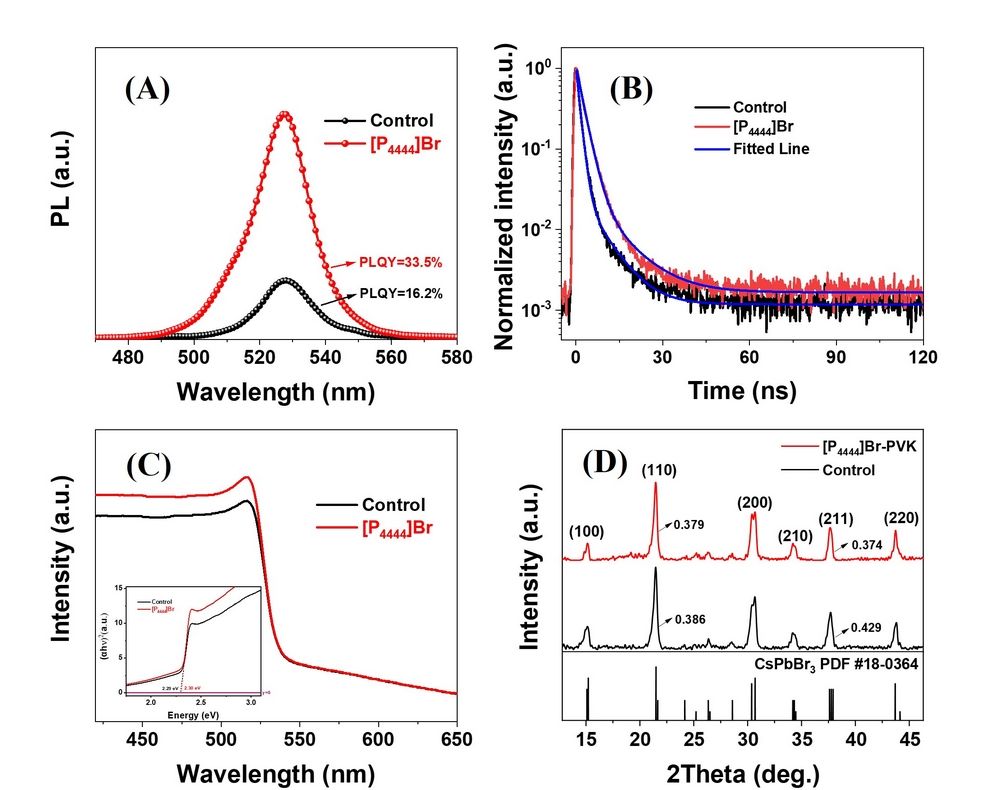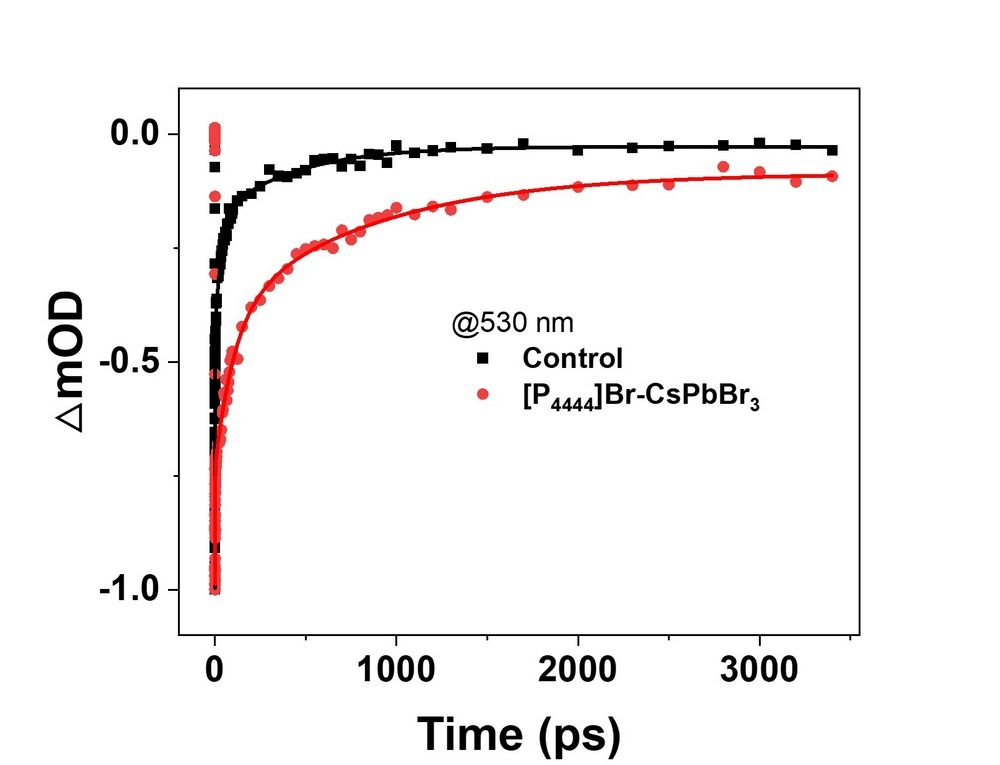
Weiting Zhang, Jiancong Zheng, Wei Huang, Min Zhao, Bingyu Jiang, Hongtao Bian*, and Yu Fang. J. Phys. Chem. C, 2024, 128, 1147-1155.

New perovskite solar cells (PSCs) have garnered significant attention due to their low cost, high efficiency and low energy consumption in the realm of optoelectronic devices. The inherent defects will impact the recombination of photogenerated carriers, stability and hamper photoelectric conversion. One effective approach to improving stability involves the procedure of defect passivation for perovskite films. Consequently, tetrabutyl phosphine bromide ionic liquids (ILs) were chosen as passivating agents for CsPbBr3 perovskite films and it can reduce the formation of defects and inhibit non-radiative recombination to a certain extent.
A range of basic characterization techniques and ultrafast femtosecond transient absorption (fs-TA) spectroscopy, were employed to comprehensively investigate the carrier cooling and recombination processes in the perovskite films. It is expected to further analyze the effect of ionic liquids on the passivation of film defects, and to explore the passivation mechanism and the photophysical phenomena related to carrier generation and relaxation in perovskite materials following photoexcitation.
In this work, the investigation utilized [P4444]Br ILs as a passivating agent to elucidate the mechanistic interactions between ILs and CsPbBr3 films. By combining basic characterization techniques and ultrafast fs-TA spectroscopy, the photophysical processes of carrier generation and relaxation in perovskite films after photoexcitation were deeply explored. It is beneficial to the crystallization of the film, and the fluorescence intensity increases after [P4444]Br passivated the surface. Our findings indicate that the film defects are significantly suppressed. The tetrabutyl phosphine cation of the hydrophobic alkyl side chain is consistent with the size-matched halogen anion, which shows a pronounced passivation effect. Compared with the control film, the lifetime of the passivated film can be fitted by a triexponential function. The measured lifetime can be linked to the recombination dynamics following band gap excitation in the film. The decay processes are attributed to in-band thermal exciton relaxation (τ1), non-radiative recombination (τ2), and band-edge exciton radiative recombination (τ3) processes, respectively. The time constant for the radiative recombination process increased by a factor of approximately 2 in the passivation sample compared with the control sample. This effect significantly elevates the overall film quality by effectively eliminating surface defects in the perovskite film and inhibiting trap-assisted nonradiative recombination.

Figure 1. (A) Steady-state PL spectra, (B) time-resolved PL measurements, (C) UV−vis absorption spectra, and (D) XRD pattern of CsPbBr3 films and with the presence of [P4444]Br treatment. The fwhm of two typical peaks was labeled accordingly.

Figure 2. Normalized TA kinetics of the ground state bleaching (GSB) signal for the control and modified CsPbBr3 films.
First Author: Zhang Weiting, master’s candidate, Shaanxi Normal University
Correspondence Author: Prof. Bian Hongtao, Shaanxi Normal University
Full Text Link: https://pubs.acs.org/doi/10.1021/acs.jpcc.3c06371